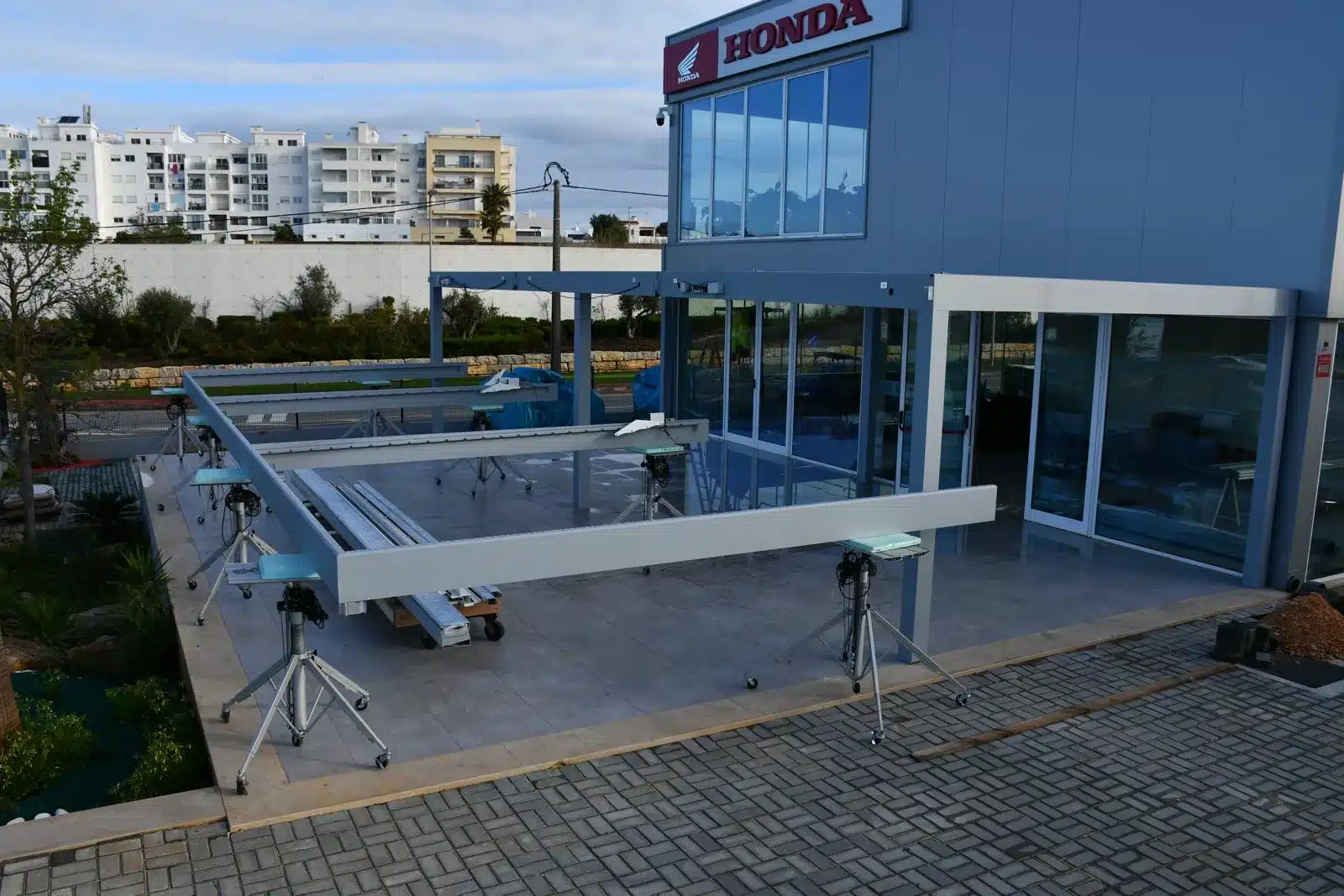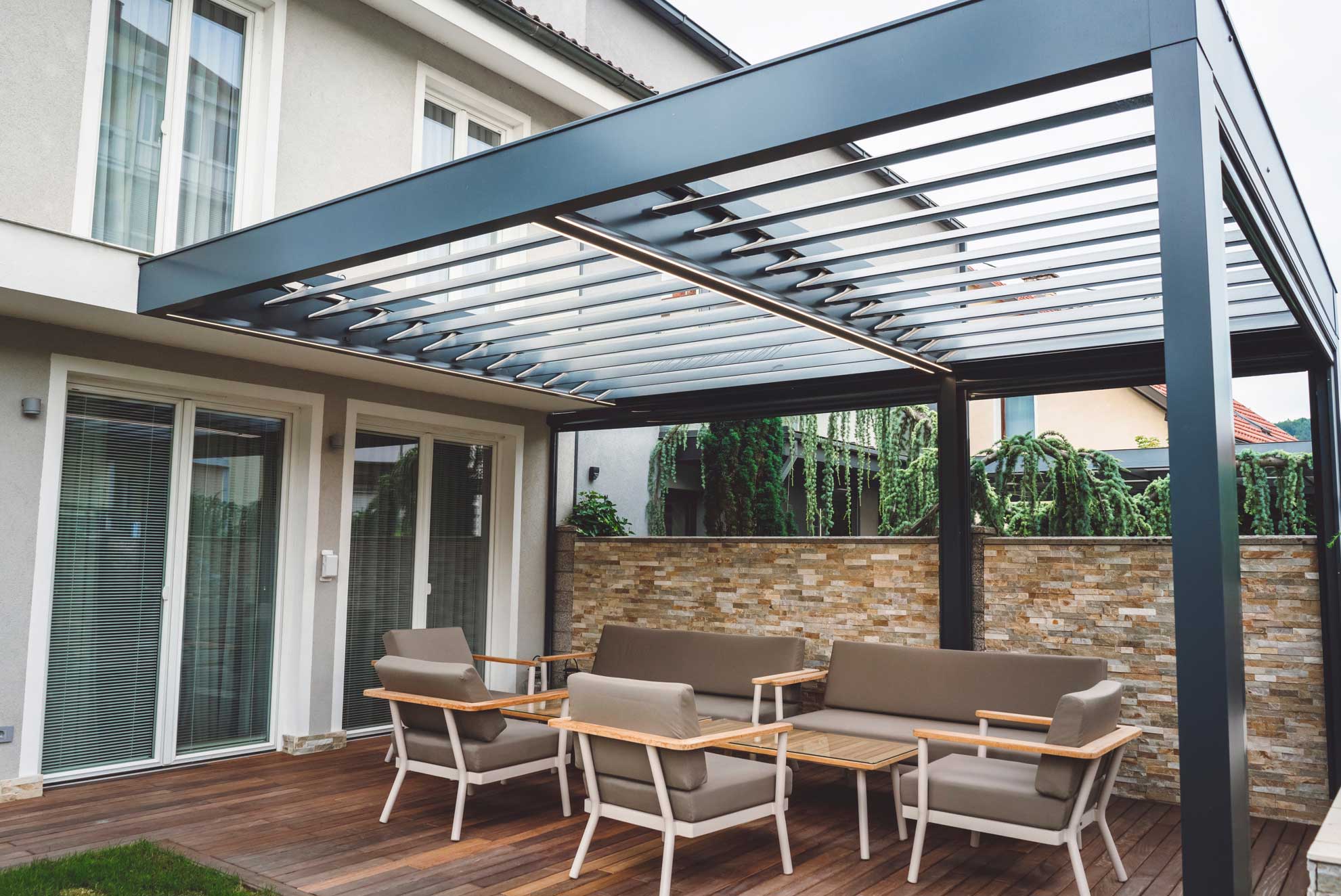Bioclimatic pergolas can provide significant long-term energy savings for both homes and businesses through several key mechanisms:
Temperature Regulation
Bioclimatic pergolas allow precise control over sunlight exposure and shading, which helps regulate temperatures in outdoor spaces and adjacent indoor areas. This can lead to:
- Reduced cooling costs in summer by blocking intense sunlight and heat
- Lower heating needs in winter by allowing warming sunlight when desired
Decreased HVAC Reliance
By creating comfortable outdoor living spaces, bioclimatic pergolas reduce dependence on indoor climate control systems. This is especially beneficial for:
- Homes, by expanding usable living space outdoors
- Businesses like restaurants, which can serve more customers outdoors without increasing indoor energy use
Natural Lighting Optimization
The adjustable louvres allow maximizing natural daylight while controlling glare. This decreases the need for artificial lighting during daytime hours, conserving electricity.
Building Insulation
When installed against a building’s facade, bioclimatic pergolas provide an additional insulating layer. This helps:
- Protect the building from direct sunlight in summer
- Reduce heat loss through walls and windows in winter



Smart Technology Integration
Many bioclimatic pergolas can be equipped with sensors and automation to optimize energy efficiency. Features like:
- Automatic louvre adjustment based on weather conditions
- Integration with home automation systems
Year-Round Usability
The versatility of bioclimatic pergolas allows outdoor spaces to be used comfortably throughout the year. This reduces the need to heat or cool larger indoor areas, particularly beneficial for businesses in the hospitality sector.While the initial investment in a bioclimatic pergola may be higher than traditional options, the long-term energy savings can be substantial. By reducing reliance on artificial heating, cooling, and lighting, these structures can lead to lower energy bills and a smaller carbon footprint over time. The exact savings will depend on factors like climate, usage patterns, and integration with existing systems, but many users report noticeable reductions in energy consumption after installation.


